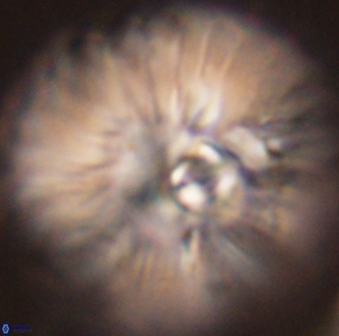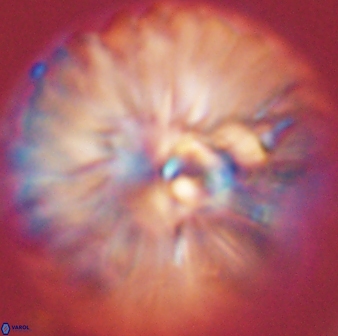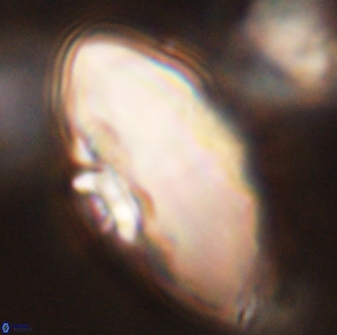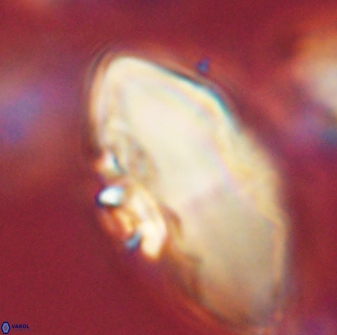Davidbukrya claracirculus
Davidbukrya claracirculus Varol, 2023
A large to very large (8.0–16.0 μm) circular, rosette-shaped asterolith with a non-birefringent lenticular disc and a hollow birefringent tube cycle.
From Latin clara circulus, bright circle – refers to its tube cycle appearance in plan-view.
The diameter of the disc: 14.50 μm (measured in phase-contrast), the thickness of the disc: 7.21 μm, and the diameter of the tube cycle: 3.50 μm (measured in plan view).
The hollow tube cycle may protrude proximally on the less convex side. The number of segments constructing the disc is between 26 and 40, and they are joined along most of their length.
In cross-polarised light, the inclined extinction lines are often difficult to distinguish. They are distinctly dextrogyre on the distal side of the disc (Plate 20, Fig. 10 in Varol, 2023). In contrast, the inclined extinction lines are laevogyre on the proximal side of the disc (Plate 20, Fig. 12 in Varol, 2023). When using the gypsum plate, the blue interference patterns correspond to the horizontal axis on the distal side (Plate 20, Figs. 10, 22; Plate 21, Figs. 9–10 in Varol, 2023). In contrast, the blue interference colours correspond to the vertical axis in the proximal view (Plate 20, Fig. 12, 24; Plate 21, Figs. 11–12 in Varol, 2023). The entire species appears birefringent in the side-view.
The presence of a hollow tube cycle distinguishes Davidbukrya claracirculus from the other species of Davidbukrya.
Varol, O. 2023. New paleocene calcareous nannofossils: Carlamuelleria, Davidbukrya, Mauriceblackia, Noelia and Senelia. Marine Micropaleontology. 180: 1-41.



